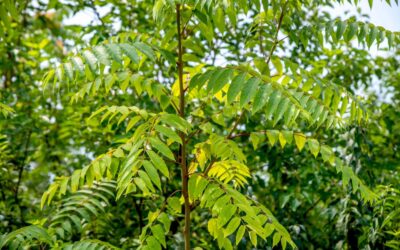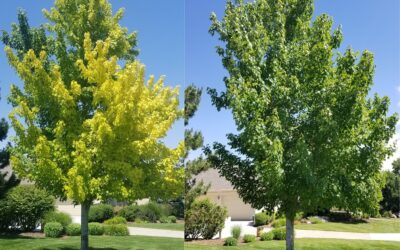Want a hardy medium-size ornamental tree with a spring display of white, fragrant flowers? Then the Mayday tree might be the one for you.
Native Culture
The Mayday tree is in the rose family (Latin name prunus padus) along with other cherries and plum trees. It’s native to northern latitudes of Europe and western Asia and has spread as far south as norther parts of Spain, Portugal, and Italy. In some areas, it’s also known as the hackberry or Summerglow cherry.
The astringent fruit is seldom eaten in western Europe, but the dried fruit is sometimes ground into a flour. Related to the chokecherry, its black fruit is very bitter, but can be used to make jams, jellies and liqueurs. It is also used to make dyes.
Mayday tree fruit was used for medicinal purposes during the Middle Ages, and when its bark was placed on doors it was said to ward off the plague. While its wood was often used in construction and furniture, the ancient Scots in the area of Advie forbade it, believing it was a “witches tree.”
Characteristics
The Mayday tree is a slow-growing medium-size ornamental tree that reaches around 25-30 feet tall at maturity. Low-growing and bushy, it spreads symmetrically, tapering to a rounded point at its top. It produces very fragrant white flowers on drooping racemes in late April or early May. The fruit ripens in midsummer.
It has narrow, tapered 2-4-inch medium to dark green alternating leaves that emerge early in spring and turn yellow to bronze-red in early fall. The bark is smooth and grey.
The Mayday tree is hardy to Zone 4 and grows well in moderately fertile, well-drained soil of most types. It prefers full sun, but will do well in partial shade, although flowering is reduced.
The Mayday Tree in Landscaping
The Mayday tree is spectacular when it blooms and gives off a distinctive, spicy smell that drifts across the landscape. Its flowers attract bees and other pollinators and its berries attract birds.
Its leaves and berries contain small amounts of hydrogen cyanide, which is not harmful to birds and insects but can be toxic to large animals, including horses, so bear that in mind when choosing where to plant it. It’s not toxic to humans in raw form when eaten in small amounts, and the berries are not harmful when processed.
Best used as an ornamental specimen tree, the Mayday tree is on Colorado Tree Coalition’s. list of preferred trees for the Front Range.
Donovan Arborists offers planting, and trimming services for Mayday trees and other trees and shrubs as well as a complete landscape maintenance package for property in the Denver area.
We’re always happy to give free estimates to homeowners and property managers for any services they may need.



